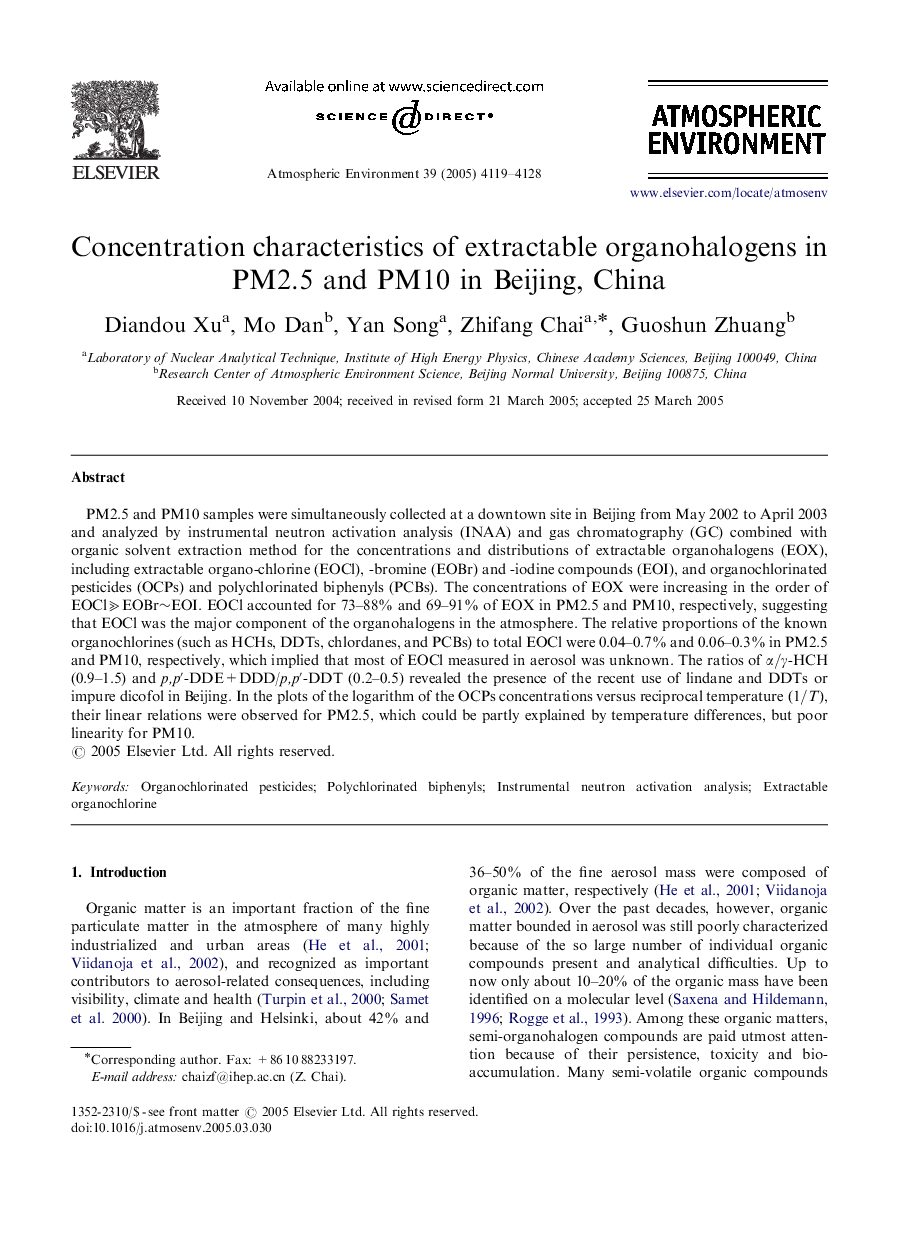| Article ID | Journal | Published Year | Pages | File Type |
|---|---|---|---|---|
| 4445295 | Atmospheric Environment | 2005 | 10 Pages |
PM2.5 and PM10 samples were simultaneously collected at a downtown site in Beijing from May 2002 to April 2003 and analyzed by instrumental neutron activation analysis (INAA) and gas chromatography (GC) combined with organic solvent extraction method for the concentrations and distributions of extractable organohalogens (EOX), including extractable organo-chlorine (EOCl), -bromine (EOBr) and -iodine compounds (EOI), and organochlorinated pesticides (OCPs) and polychlorinated biphenyls (PCBs). The concentrations of EOX were increasing in the order of EOCl⪢EOBr∼EOI. EOCl accounted for 73–88% and 69–91% of EOX in PM2.5 and PM10, respectively, suggesting that EOCl was the major component of the organohalogens in the atmosphere. The relative proportions of the known organochlorines (such as HCHs, DDTs, chlordanes, and PCBs) to total EOCl were 0.04–0.7% and 0.06–0.3% in PM2.5 and PM10, respectively, which implied that most of EOCl measured in aerosol was unknown. The ratios of α/γα/γ-HCH (0.9–1.5) and p,p′-DDE+DDD/p,p ′-DDT (0.2–0.5) revealed the presence of the recent use of lindane and DDTs or impure dicofol in Beijing. In the plots of the logarithm of the OCPs concentrations versus reciprocal temperature (1/T)(1/T), their linear relations were observed for PM2.5, which could be partly explained by temperature differences, but poor linearity for PM10.
